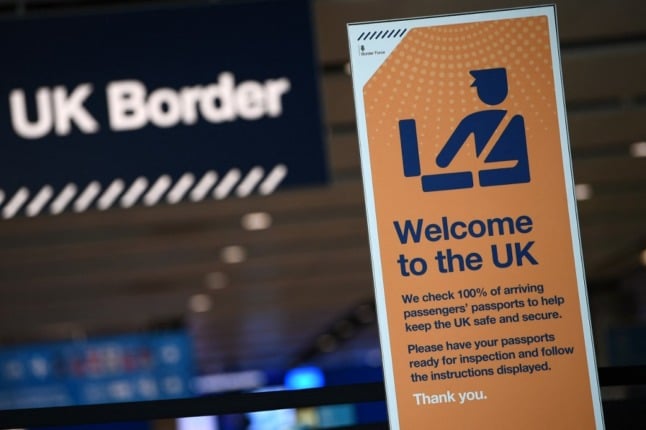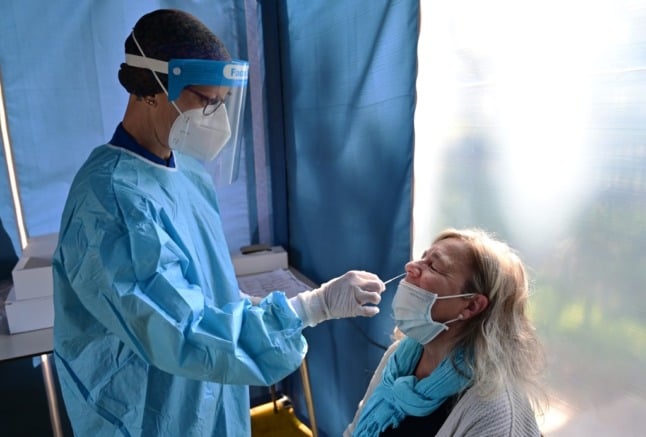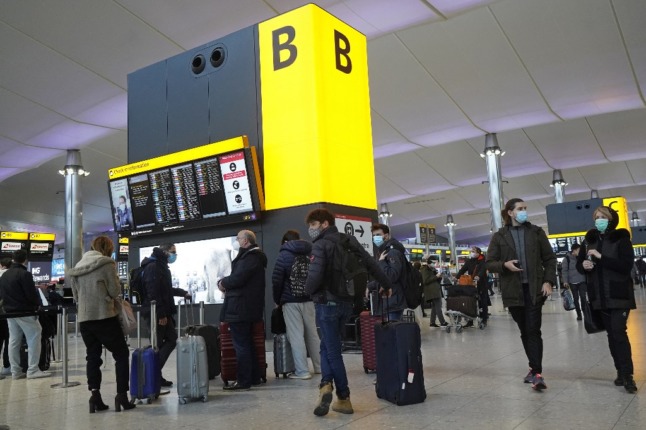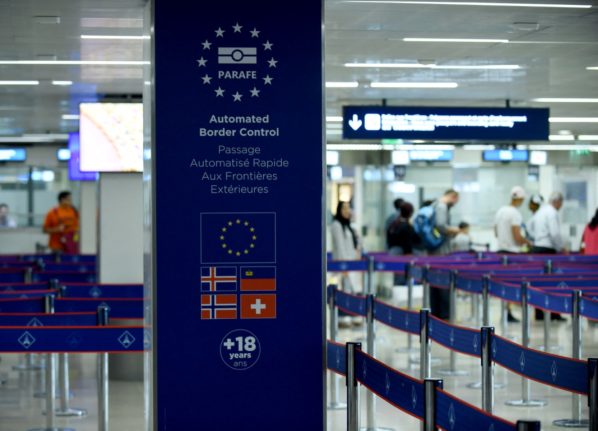The UK changed its much-criticised Covid border rules on Monday October 4th.
Since then, fully vaccinated arrivals from Italy no longer need to quarantine, provided they meet the UK government’s definition of vaccinated (more on that below).
And from October 4th vaccinated travellers no longer need a pre-departure Covid test either.
READ ALSO: What changes in October if you’re travelling between Italy and the UK
Travellers do, however, still need ‘Day 2’ tests on arrival – but from October 24th these can be antigen tests (known in the UK as lateral flow tests) rather than PCR tests, with the new tests on sale from Friday, October 22nd.
Travellers have been complaining for months about the extortionate prices and terrible service afforded by the Day 2 testing system, and the switch to lateral flow tests should make these cheaper – in theory.
You do still, however, have to use a test provider from the list of approved government suppliers and the test must be booked and paid for before you leave Italy.
While broadly similar, Covid-19 travel, quarantine and testing rules are slightly different if you’re heading to Scotland, Wales, or Northern Ireland
What it means
All passengers, including children, have to take a test on or before ‘Day Two’ after their arrival in England.
But – crucially – this Day Two test must be booked before you leave Italy.
The passenger locator form, required for all arrivals into England, cannot be completed without a reference number from a test, booked through one of the UK government’s approved list of suppliers.
Anyone who fails to take this Day Two test could face a fine of up to £2,000.
For fully vaccinated travellers, the Day Two test marks the end of their Covid travel requirements, assuming it comes back negative.
Unvaccinated travellers from Italy, however, must quarantine for 10 full days and take another test on or before Day Eight of their stay.
Travel to UK: Covid recovered plus single dose still not considered ‘fully vaccinated’

When is ‘Day Two’?
It is important to note that for test and quarantine purposes, the day of arrival is counted as Day Zero. The following day is Day One, the day after that Day Two, and so on.
Proof of purchase of the second test must be included on the passenger locator form, which everyone over age 18 must complete and submit within the 48 hours before they travel.
How to book a test
Tests must be booked from a company on the government’s list of test providers in England and Northern Ireland here.
Before October 24th
The test must be a PCR test, but PCR tests in the UK may be carried out at home, or by going to a clinic. Prices vary based on how many tests you require and how quickly you need the results – and many clinics offer a range of packages.
According to the government website, you’ll have a wait of 24 to 36 hours to get your test result.
However social media and the British media are awash with stories of people waiting considerably longer than that, never receiving their results or never receiving the tests in the first place.
After October 24th
From this date, the test can be a rapid-result antigen test, known as a lateral flow test in the UK, which travellers do at home with no need to send the sample to a lab.
However, this must still be booked in advance and from one of the approved government suppliers.
The UK government published its updated list including lateral flow tests on Friday, October 22nd and initially this looked good, with several tests listed at £20 or under.
However when we tried to book one on Friday lunchtime, none of the sites listing tests at or around £20 were actually selling them at that price – some sites said they had no tests available, while others only listed options to purchase the considerably more expensive PCR tests.
It remains unclear whether this will change in the days to come.
The new system should, however, eliminate the problem of long waits for results.
Companies
The world of Day 2 testing is an infuriating one.
You’ll find the companies offer packages depending on the status of the country you are travelling from, in other words green or amber. Even though the tests are the same. Some companies confusingly list products only for “UK vaccinated”.
Quick spin through UK's Day 2 Covid travel tests
🇬🇧 Extortionate pricing
🇬🇧 £50 difference between arrivals from green and amber countries, despite being the *exact same product*
🇬🇧 Day 2 tests 'unavailable' while more expensive Day 2&8 packages available from same supplier pic.twitter.com/14wTgfmvp6— Emma Pearson (@LocalFR_Emma) September 27, 2021
Some we found appear to have minimum spends so even if you find a cheap test you can’t buy it, while others seem cheap at first – but once you get through the final ordering stage extra charges bump up the total.
You also have to book individually for each passenger who requires a test – so if you’re travelling as a family of four you will have to go through the booking process four times.
All of this can come as a shock to those who live abroad and have become used to the testing process (and prices) in Italy, for example.
Prices vary depending on the region of Italy, but antigen tests usually cost around €20-30 while a molecular (PCR) test is around €50-60.
They can be accessed by simply popping into the local pharmacy or booking online with a medical lab. Find more information about getting tested in Italy here.
Short stays
So, what if you’re staying in the UK for less than two days? You still need the Day 2 test, because the passenger locator form cannot be completed without the booking reference, and you cannot enter England without the form.
So you must pay for a test even if you will no longer be in England when the time comes to use it.
Many travellers also report having to take another test before flying back to Italy from the UK, even if their Day Two test fell within the 48-hour window before their return trip, because UK authorities class Day Two and ‘Fit to Fly’ tests differently.
More on the madness of UK travel testing. I'm flying back to UK for 3 days, so have to take a Day 2 test & a test for travel back to Italy. Just discovered that UK govt won't allow Day 2 tests to be used as fit-to-fly tests. So I will take 2 tests at the same time and pay twice!
— Simon Hix (@simonjhix) September 15, 2021
Fully vaccinated
Also be aware that the UK government’s definition of ‘fully vaccinated’ is not the same as the Italian government’s.
You need to have been vaccinated with a UK approved vaccine – Pfizer, Moderna, AstraZeneca or Johnson & Johnson – and be at least 14 days from your final dose.
After much confusion, the UK has finally agreed to recognise as vaccinated people who had a ‘mixed dose’ abroad: eg. one shot of AstraZeneca and one Pfizer.
But while in Italy, people who previously had Covid are counted as fully vaccinated after a single dose of the vaccine, this is not the case in the UK.

Q&A: Answers to your questions about Italy’s travel rules
Those who don’t show both documents are subject to a five-day quarantine with the requirement to take a test at the end of this period.
However, tests are easily accessed and booked (the local health authority will often arrange the post-isolation test for you, though it’s at your expense) and there are no reports of the sort of widespread delays and other problems seen in the UK.
Keep up with the latest updates via The Local’s homepage or travel news section.



 Please whitelist us to continue reading.
Please whitelist us to continue reading.
This has changed – you dont require a test now as long as you are fully vaccinated from the UK GOV website below
https://www.gov.uk/guidance/coronavirus-covid-19-testing-for-people-travelling-to-england
Who needs to take a test
You must take a COVID-19 test before you travel to England if you either:
do not qualify as fully vaccinated for travel to England
have been in a country or territory on the red list in the 10 days before you will arrive in England
You do not have to take a COVID-19 test before you travel to England if you qualify as fully vaccinated and you have not been in a red list country.
Check the Travel to England guidance to find out if you qualify as fully vaccinated
Ive been told that this has changed again – from more recently traveling back to Uk we need a day 2 PCR test and quarantine for 2 days. I just bought the random click and collect for 34.99. I think that’s cheapest option?